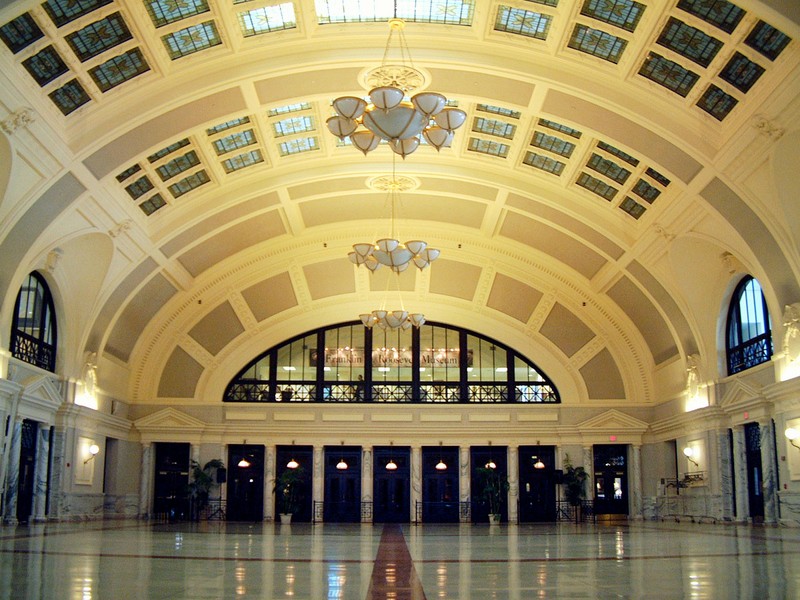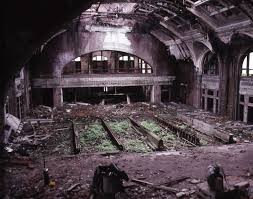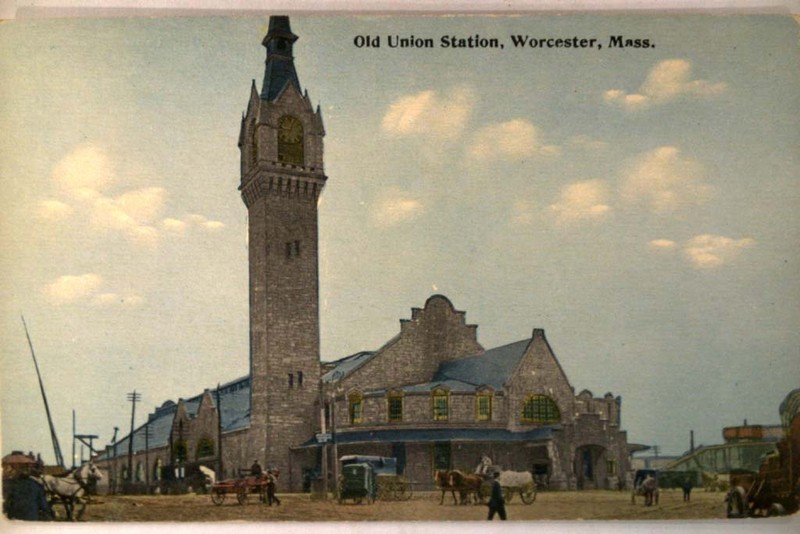Worcester Union Station
Introduction
Text-to-speech Audio
Images
Worcester Union Station (image from Wikimedia)

Interior with skylight (image from Nirvana Excursions)

Union Station interior prior to restoration (image from WorcesterMass.com)

The 1875 Worcester Union Station (image from Wikimedia)

Backstory and Context
Text-to-speech Audio
Trolley service at Union Station was discontinued in 1945,
and as train travel decreased throughout the 1960s and 1970s, the station
closed and was boarded up in 1972 [1; 2]. Within the decade, little remained
but the skeleton of the building, the plaster and beams having crumpled to the
floor under the skylight's missing panels [1]. The non-profit Union Station
Alliance formed in 1992, and in 1994, the Worcester Redevelopment Authority
(WRA) purchased the station and began a $32 million restoration directed by the
architectural firm of Finegold Alexander & Associates. The marble floor and
stained glass ceiling of the main hall were restored, new red oak and mahogany
trim installed, and the towers re-built with steel reinforcement. In July of
2000, Union Station reopened to passengers as an intermodal facility,
connecting inter- and intra-city bus lines, taxis, Amtrak, and Massachusetts
Bay Transit Authority's Framingham/Worcester rail lines. The Grand Hall hosts
events, retail, business offices, and a restaurant, lounge, and coffee shop [1;
2].
